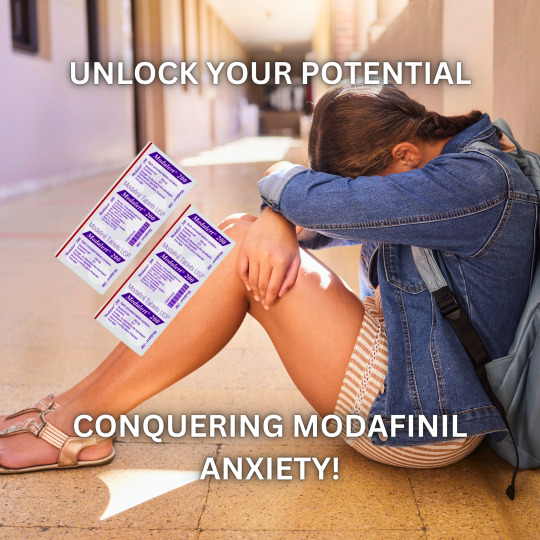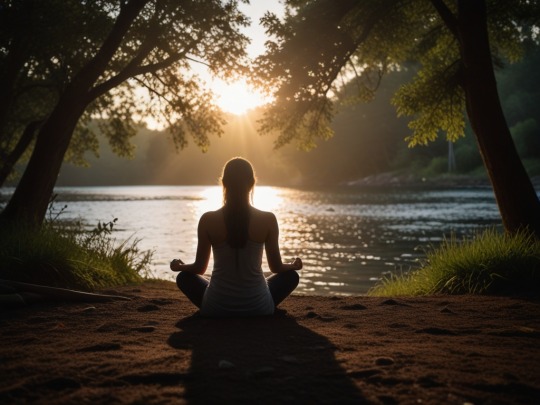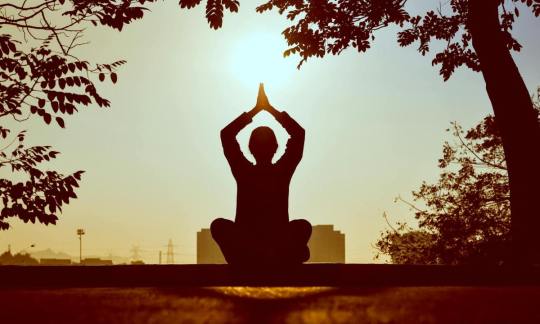#mindfulnessjourney
Text
Basics of Manifesting: "Look upon your desires – all of them – as the spoken words of God" Neville Goddard
“Look upon your desires – all of them – as the spoken words of God, and every word or desire a promise. The reason most of us fail to realize our desires is because we are constantly conditioning them. Do not condition your desire. Just accept it as it comes to you. Give thanks for it to the point that you are grateful for having already received it – then go about your way in peace.”
Neville…

View On WordPress
#at your command#ConsciousCreation#CreateYourReality#DesireManifestation#desires are the spoken word of god#DreamBigAchieveBig#DreamsIntoReality#EmbraceFaith#EmbraceYourDesires#EmpowerYourself#InfinitePossibilities#InnerConviction#lawofattraction#Manifest your dreams#ManifestationMagic#ManifestingDreams#MindfulnessJourney#MindOverMatter#neville goddard#NevilleGoddard#PlantingSeeds#PositiveIntentions#PositiveMindset#PowerOfBelief#selfempowerment#TransformYourLife#TrustTheProcess#UnlockYourPotential#UnwaveringBelief#VisualizationWorks
5 notes
·
View notes
Text
Life Lens - Entry 27
Vibes of the Present
You know how sometimes we get caught up in this whole idea of where we should be in life? It’s like we’re chasing this perfect future, and it just ends up stressing us out for no good reason.
But here’s the thing: I’ve figured out that this whole “should be” mindset is a trap. It’s like we’re missing out on what’s happening right now because we’re so focused on some far-off…

View On WordPress
#EmbracingThePresent#EnjoyTheMoment#FindYourBalance#GoodVibes#LiveLifeFully#MindfulnessJourney#PresentMomentAwareness#SelfAcceptance#TheLoulouge
2 notes
·
View notes
Text
🚀 Modafinil & Anxiety: Unlocking the Connection 🧠

Experience a surge in productivity with Modafinil? Hold up! Ever encountered anxiety along the way? You're not alone. Let's delve into the depths of Modafinil-induced anxiety and how to navigate it effectively.
Modafinil Unveiled: 🌟 FDA-approved, Modafinil's a game-changer for narcolepsy & sleep disorders, but watch out for anxiety lurking in the shadows.
Anxiety Unmasked: 😨 Stress, health issues, even childhood trauma - anxiety wears many masks. Modafinil can sometimes trigger these anxiety demons.
The Science Behind the Scenes: 🧠 Dive into neurotransmitters, brain frequencies, and the delicate dance between Modafinil and anxiety. It's all about balance.
Spotting the Signs: 🚨 Racing thoughts, sweaty palms, or restless nights? Modafinil's anxiety signals can be both mental and physical. Stay vigilant.
Taming the Anxiety Beast: 🦁 Take charge! From meditation to tweaking doses, discover practical strategies to keep anxiety at bay while riding the Modafinil wave.
Modafinil's Double-Edged Sword: ⚔️ Can Modafinil be both the problem and the solution? New studies suggest its potential in combating anxiety. Intriguing, isn't it?
The Final Verdict: ⭐️ Striking a balance is key. With mindful usage, proper guidance, and a sprinkle of science, Modafinil can be your productivity pal minus the anxiety woes.
#ModafinilTips#AnxietySolutions#NootropicInsights#ProductivityHacks#MindfulnessJourney#BrainBoosters#HealthAndWellness#MentalHealthAwareness#StayCalm#StayFocused#StressLess#UnlockYourPotential#NarcolepsyFighter#HealthyLiving#BalanceIsKey#ModafinilResearch#AnxietyManagement#StayInformed#SelfCareSaturday#MindBodyConnection
0 notes
Text
The Art of Meditation Walking

Introduction
In the realm of mindfulness practices, meditation walking stands out as a serene and contemplative exercise that harmonizes body and mind. Through deliberate steps and focused awareness, practitioners embark on a journey of inner exploration and tranquility. Let’s delve into the intricacies of this ancient practice and uncover the steps involved in mastering the art of meditation walking.
Setting the Intention
Before embarking on a meditation walk, it’s essential to set a clear intention. Whether it’s to cultivate inner peace, relieve stress, or simply connect with nature, defining your purpose will guide your practice and anchor your focus.
Choosing the Right Environment
Selecting a conducive environment is crucial for a fulfilling meditation walk. Opt for serene and natural settings such as parks, forests, or quiet pathways, away from distractions and noise pollution. The harmonious sounds of nature can enhance the meditative experience and deepen your connection with the present moment.
Mindful Preparation
As you prepare for your meditation walk, take a moment to centre yourself and tune into your breath. Grounding exercises, such as deep breathing or body scans, can help calm the mind and bring your awareness into the present moment, setting the stage for a profound meditative experience.
Initiating the Walk
Begin your meditation walk at a gentle pace, allowing your body to settle into a natural rhythm. Pay attention to each step, feeling the sensation of your feet making contact with the ground. Engage your senses fully, observing the sights, sounds, and smells around you with a curious and open mind.
Cultivating Awareness
As you continue walking, maintain a heightened sense of awareness, both internally and externally. Notice the subtle movements of your body, the cadence of your breath, and the fluctuations of your thoughts and emotions. Embrace whatever arises with acceptance and non-judgment, allowing each experience to unfold organically.
Practising Mindful Presence
Meditation walking is an invitation to be fully present in each moment, without the burden of past regrets or future worries. Bring your attention back to the sensations of walking whenever your mind wanders, gently refocusing on the present moment with kindness and compassion.
Embracing Stillness
At certain intervals during your meditation walk, you may choose to pause and embrace moments of stillness. Stand or sit quietly, allowing yourself to absorb the tranquility of your surroundings and the peace within. This interlude offers an opportunity for deep reflection and inner contemplation.
Expressing Gratitude
As your meditation walk draws to a close, take a moment to express gratitude for the experience and the insights gained along the way. Reflect on the beauty of nature, the miracle of life, and the interconnectedness of all beings. Cultivating a sense of gratitude fosters positivity and deepens your connection with the world around you.
Closing the Practice
Conclude your meditation walk with a sense of reverence and closure. Offer a silent thank you to yourself, the earth, and the universe for the gift of mindfulness and presence. Carry the serenity and insights gained from your practice into the rest of your day, infusing each moment with mindful awareness and heartfelt appreciation.
Conclusion
Meditation walking is more than just a physical exercise; it’s a profound journey of self-discovery and tranquility. By following these steps and embracing the art of mindfulness, you can unlock the transformative power of meditation walking and cultivate a deeper connection with yourself and the world around you.
FAQs
1. Can anyone practice meditation walking?
Absolutely! Meditation walking is accessible to people of all ages and fitness levels. It’s a gentle practice that can be adapted to suit your individual needs and preferences.
2. How long should a meditation walk be?
The duration of a meditation walk can vary depending on your schedule and preferences. Some people prefer short walks of 10–15 minutes, while others may enjoy longer walks of 30 minutes or more. The key is to find a duration that feels comfortable for you.
3. Can I listen to music or podcasts while meditation walking?
While some people may find that listening to music or podcasts enhances their meditation walk, others prefer to immerse themselves in the sounds of nature or the rhythm of their own breath. Experiment with different approaches to see what works best for you.
4. What are the benefits of meditation walking?
Meditation walking offers a wide range of benefits, including reduced stress and anxiety, improved focus and concentration, increased mindfulness, and enhanced physical well-being. Regular practice can also promote better sleep and overall emotional balance.
5. How often should I practice meditation walking?
The frequency of your meditation walks is entirely up to you. Some people choose to practice daily, while others may incorporate meditation walking into their routine a few times a week. The most important thing is to make it a consistent habit that nourishes your mind, body, and spirit.
#MindfulMovement#MeditationWalking#MindfulnessJourney#InnerPeace#inner peace#WalkingMeditation#SelfCareSunday#self care sunday
0 notes
Text
From Burnout to Bliss: Integrating Spirituality into Self-Care

In the hustle and bustle of modern life, burnout has become an all too common experience, leaving individuals feeling depleted, overwhelmed, and disconnected from themselves. However, by integrating spirituality into self-care practices, it's possible to move from burnout to bliss, fostering holistic well-being and deepening our connection to the sacred. In this exploration of "From Burnout to Bliss: Integrating Spirituality into Self-Care," we delve into the concept's depth and provide practical tools for integrating it into our daily lives.
Understanding the Concept:
Burnout is a state of physical, emotional, and mental exhaustion resulting from chronic stress and overwork. It can manifest as feelings of fatigue, cynicism, and reduced effectiveness in both personal and professional life. Integrating spirituality into self-care involves recognizing that true well-being encompasses not only physical and emotional health but also spiritual fulfillment and connection to something greater than ourselves.
Recognizing Signs of Burnout: The first step in addressing burnout is recognizing its signs and symptoms. These may include chronic fatigue, irritability, lack of motivation, and feelings of disconnection. By tuning into our body and emotions, we can identify when we're experiencing burnout and take proactive steps to address it.
Embracing Spiritual Self-Care: Spiritual self-care involves nurturing our inner life and connecting with our spiritual essence. This can take many forms, including prayer, meditation, contemplation, and spending time in nature. By engaging in spiritual practices that replenish our soul and cultivate a sense of meaning and purpose, we strengthen our resilience in the face of stress and adversity.
Cultivating Mindfulness: Mindfulness is a key component of spiritual self-care, allowing us to cultivate presence, acceptance, and inner peace. Through mindfulness meditation, we learn to observe our thoughts and emotions without judgment, cultivating a sense of spaciousness and tranquility within. By incorporating mindfulness into our daily routine, we can reduce stress, enhance self-awareness, and promote overall well-being.
Setting Boundaries: Boundaries are essential for preventing burnout and preserving our energy and well-being. Spiritual self-care involves setting clear and firm boundaries that honor our needs, values, and priorities. This may involve saying no to excessive demands, delegating tasks, or renegotiating agreements that no longer serve our highest good. By establishing boundaries, we create space for rest, rejuvenation, and spiritual nourishment.
Practicing Gratitude: Gratitude is a powerful spiritual practice that can transform our perception of life and enhance our well-being. By cultivating an attitude of gratitude, we shift our focus from scarcity to abundance, recognizing the blessings that surround us each day. Through practices such as gratitude journaling, reflection, and acts of kindness, we cultivate a sense of appreciation and contentment that nourishes the soul.
Engaging in Creative Expression: Creative expression is a form of spiritual self-care that allows us to tap into our innate creativity and connect with our deepest desires and emotions. Whether through art, music, writing, or dance, creative expression provides an outlet for self-expression, exploration, and healing. By engaging in creative activities that bring us joy and fulfillment, we replenish our spirit and cultivate a sense of wholeness and vitality.
Practical Toolkit for Integrating Spirituality into Self-Care:
To integrate spirituality into self-care practices, we need practical tools and techniques that support our journey towards holistic well-being and spiritual fulfillment. Here's a toolkit to help readers apply these principles in their daily lives:
Daily Spiritual Practice: Set aside time each day for a spiritual practice that nourishes your soul and connects you with the sacred. This could include meditation, prayer, journaling, or spending time in nature. Find practices that resonate with you and commit to incorporating them into your daily routine.
Mindfulness Meditation: Practice mindfulness meditation to cultivate presence, awareness, and inner peace. Set aside a few minutes each day to sit quietly, focus on your breath, and observe your thoughts and emotions without judgment. Through regular mindfulness practice, you'll develop greater resilience to stress and cultivate a deeper sense of connection to yourself and the world around you.
Gratitude Journaling: Keep a gratitude journal to cultivate an attitude of gratitude and appreciation for the blessings in your life. Each day, write down three things you're grateful for, no matter how small or seemingly insignificant. This practice shifts your focus from what's lacking to what's abundant, fostering a sense of contentment and well-being.
Creative Expression: Engage in creative activities that bring you joy and allow you to express yourself authentically. Whether it's painting, writing, dancing, or playing music, find creative outlets that nourish your soul and replenish your spirit. Allow yourself to play, experiment, and explore without judgment or inhibition.
Nature Connection: Spend time in nature to connect with the beauty and wisdom of the natural world. Take leisurely walks in the park, hike in the mountains, or sit by a body of water and listen to the sounds of nature. Nature has a profound ability to soothe the soul, reduce stress, and awaken our sense of wonder and awe.
Community Support: Seek support from like-minded individuals who share your journey of integrating spirituality into self-care. Join spiritual communities, attend workshops or retreats, or engage in online forums where you can connect with others on a similar path. Having a supportive community can provide encouragement, inspiration, and accountability as you navigate the challenges and triumphs of your spiritual journey.
By incorporating these practical tools and techniques into their daily routines, readers can move from burnout to bliss, nurturing their physical, emotional, and spiritual well-being. Integrating spirituality into self-care becomes not just a luxury but a necessity for living a balanced, fulfilling, and meaningful life.
#BurnoutToBliss#SelfCareSpirituality#MindfulnessJourney#GratitudePractice#CreativeExpression#NatureConnection#HealthyBoundaries#WellnessWednesday#SoulfulLiving#SpiritualWellbeing#HolisticHealth#JoyfulLiving#SelfCareRevolution#MindBodySpirit#InnerPeaceJourney
0 notes
Text

Mastering Anger: A Journey to Emotional Freedom
Introduction:
In the intricate dance of human emotions, anger often emerges as a formidable force, capable of both shaping and shaking our lives. Yet, amidst its tempestuous waves, lies the potential for transformation and growth. Meera Mandakini's book, Mastering Anger: A Journey to Emotional Freedom, serves as a guiding light through this tumultuous terrain, offering invaluable insights and practical tools for navigating the depths of anger towards a state of profound emotional liberation.
Understanding Anger:
Mandakini delves into the multifaceted nature of anger, unraveling its roots and manifestations. Drawing from psychology, neuroscience, and spiritual wisdom, she elucidates the underlying causes of anger, shedding light on its role as a messenger of unmet needs, unresolved wounds, and misplaced perceptions. By cultivating awareness and discernment, readers are empowered to unravel the complex layers of their anger, paving the way for profound self-discovery and healing.
The Path to Emotional Freedom:
Through a blend of ancient wisdom and modern methodologies, Mandakini charts a transformative path towards emotional freedom. She offers practical techniques for managing anger in the moment, from mindfulness practices to breathwork exercises, enabling readers to cultivate a sense of inner calm amidst external turmoil. Moreover, she explores the deeper dimensions of forgiveness, compassion, and self-love, inviting readers to embrace their vulnerability and reclaim their power.
Harnessing Anger as a Catalyst for Change:
Far from being a destructive force, Mandakini reframes anger as a potent catalyst for personal and societal transformation. By channeling anger constructively, individuals can fuel their passion for justice, catalyze positive change, and forge deeper connections with themselves and others. Through inspiring stories and real-life examples, she illustrates how anger, when harnessed with wisdom and intention, can become a force for healing, empowerment, and social justice.
Embracing Wholeness:
At its core, Mastering Anger is a journey towards wholeness – a journey of integrating the fragmented aspects of ourselves with compassion and acceptance. Mandakini invites readers to embark on this sacred quest, honoring their anger as a sacred teacher on the path towards emotional liberation. With each step, readers are guided towards a deeper understanding of themselves, a greater sense of inner peace, and a profound connection to the vast tapestry of life.
Conclusion:
In Mastering Anger: A Journey to Emotional Freedom, Meera Mandakini offers a timeless roadmap for navigating the turbulent waters of anger towards the shores of emotional liberation. Through its pages, readers are invited to embark on a profound journey of self-discovery, healing, and transformation, reclaiming their innate capacity for joy, love, and authentic expression. As we master the art of anger, we awaken to the boundless potential of our own hearts, ushering in a new era of compassion, understanding, and freedom.
#AngerTransformation#EmotionalFreedom#InnerHarmony#SelfDiscovery#MindfulnessJourney#PositiveChange#CompassionateLiving#HealingJourney#SelfLove#EmotionalIntelligence#InnerPeace#PersonalGrowth#SpiritualWisdom#Forgiveness#SocialJustice#Empowerment#amazon#bestsellerbook#motivation
0 notes
Text
A Beginner's Guide to Meditation"
Where should You meditate?
When it comes to meditation, the possibilities are endless. Whether you’re in a cozy chair, seated on the floor, or nestled in bed, the key is to create a space that supports your mental well-being. However, not all meditation environments are created equal.
While the allure of meditating in bed may be tempting, it’s important to recognize the pitfalls of this…

View On WordPress
#DailyPractice#InnerCalm#MeditationTechniques#MentalClarity#MindBodyConnection#MindfulLiving#MindfulnessJourney#SerenityGuide#StressRelief#WellnessHabits
1 note
·
View note
Text

Embracing the present moment 🕰️. Let's cherish each experience and journey without the weight of yesterday or the worries of tomorrow. 💙
#NoteToSelf#LiveInTheMoment#PresentOverPerfect#MindfulnessJourney#DailyReminders#SelfReflection#PositiveVibesOnly#LifeQuotes#StayPresent#MindfulLiving#InspirationDaily#PersonalGrowth#WisdomQuotes#InspirationalThoughts#GrowthMindset#MomentsMatter#LifeGoals#StayFocused#LifeMantras#EmbraceToday#CarpeDiem#SelfCareMatters#fhealync
0 notes
Text

𝐎! 𝐦𝐢𝐧𝐝, 𝐛𝐞 𝐡𝐚𝐩𝐩𝐲-𝟑 𝐋𝐚𝐬𝐭𝐢𝐧𝐠 𝐇𝐚𝐩𝐩𝐢𝐧𝐞𝐬𝐬 𝐖𝐢𝐭𝐡𝐢𝐧 𝐎𝐮𝐫 𝐎𝐰𝐧 𝐇𝐚𝐧𝐝𝐬
𝙴𝚊𝚜𝚝𝚎𝚛𝚗 𝚆𝚒𝚜𝚍𝚘𝚖 𝚊𝚒𝚖𝚜 𝚝𝚘 𝚑𝚎𝚕𝚙 𝚜𝚎𝚎𝚔𝚎𝚛𝚜 𝚋𝚎𝚌𝚘𝚖𝚎 𝚎𝚖𝚘𝚝𝚒𝚘𝚗𝚊𝚕𝚕𝚢 𝚊𝚗𝚍 𝚖𝚎𝚗𝚝𝚊𝚕𝚕𝚢 𝚖𝚊𝚝𝚞𝚛𝚎 𝚜𝚘 𝚝𝚑𝚊𝚝 𝚠𝚎 𝚞𝚗𝚍𝚎𝚛𝚜𝚝𝚊𝚗𝚍 𝚙𝚛𝚘𝚡𝚢 𝚏𝚘𝚛 𝚑𝚊𝚙𝚙𝚒𝚗𝚎𝚜𝚜 𝚒𝚜 𝚗𝚘𝚝 𝚙𝚘𝚜𝚜𝚒𝚋𝚕𝚎 𝚊𝚗𝚍 𝚜𝚝𝚊𝚛𝚝 𝚝𝚑𝚎 𝚓𝚘𝚞𝚛𝚗𝚎𝚢 𝚘𝚏 𝚜𝚎𝚕𝚏-𝚍𝚒𝚜𝚌𝚘𝚟𝚎𝚛𝚢.
𝐑𝐞𝐚𝐝 𝐟𝐮𝐥𝐥 𝐚𝐫𝐭𝐢𝐜𝐥𝐞 𝐚𝐭:: https://shorturl.at/twDLM
Join us on Linkedin: https://www.linkedin.com/in/girishjha/
Follow us on Linktree: https://linktr.ee/girish_jha
#GirishJha#lifecoach#easternwisdom#linkedinprofile#linkedinarticle#ReadArticle#joinnow#mindfullness#educatemind#MindfulnessJourney#selfdiscovery
0 notes
Text
Finding Calm in a Busy World: The Game-Changing Solution of Smart Meditation Devices
#DhyanaSmartRing#MindfulnessTech#HolisticHealth#WearableWellness#MindfulLiving#MindfulTech#InnerPeace#HealthTech#MindfulnessJourney#DigitalWellness#Biofeedback#SleepHealth#StressManagement#SustainableLiving#EcoFriendlyTech#WearableTech#CalorieTracking#HRVMonitoring#SleepTracking#MeditationDevice#MindfulStyle
0 notes
Text
Mindful Metamorphosis: Embracing Transformation through Daily Awareness
Introduction:
In a world where the constant clamor of digital notifications and the relentless pursuit of productivity drowns the symphony of our inner thoughts, we must find sanctuary in the silence of our minds. “Mindful Metamorphosis: Embracing Transformation through Daily Awareness” is not just a concept, it’s a revolution—a clarion call to the restless souls seeking solace in the chaos of…

View On WordPress
0 notes
Text
Will we ever find peace while wanting something from everybody? Maybe we'll find ourselves becoming a mess that we'd never imagine us to be.
#innerpeacejourney#letting go#self reflection#findyourbalance#peacewithin#release#embracechange#mindfulliving#seeking#self discovery#authentic self#mindfulnessjourney#let it go#peacefulmind#harmonywithin
1 note
·
View note
Text
Journey Within: Exploring the Depths of Your Sacred Space
Let your sacred space be the canvas upon which you paint your dreams.🎨
#InnerPeace#PeaceWithin#InnerJourney#SpiritualAwakening#MindfulnessJourney#DivineConnection#MindfulMoments#quoteoftheday
0 notes
Text
Embracing Serenity: My Strategies for Coping with Negative Feelings
What strategies do you use to cope with negative feelings?
By SodakArtist
In the tumultuous journey of life, navigating through negative emotions is an art form in itself. As I walk this path, I’ve discovered a repertoire of strategies that not only soothe my soul but also nurture my spirit. Allow me to share these cherished practices with you, each infused with a serene passion and a…
View On WordPress
#ArtisticExpression#ArtTherapy#CopingStrategies#CreativeAlchemy#HealingCrystals#InnerPeaceJourney#MeditationMoments#MindfulnessJourney#NatureTherapy#PositiveVibesOnly#SelfDiscovery#SoulfulSounds#1. EmbracingSerenity#dailyprompt#dailyprompt-1878
0 notes
Text
https://www.soullicensedtipsandtales.com/stepping-beyond-illusion-the-power-of-redirecting-thoughts/
In the cacophony of modern life, our minds often become entangled in a web of information that shapes our perceptions and influences our reality. The perspective shared on October 4, 2011, urges us to reevaluate our engagement with negativity and highlights the transformative potential of redirecting our thoughts. It challenges the belief that immersion in negative news or thoughts is an obligation, advocating instead for a shift towards more uplifting and positive mental landscapes…
0 notes
Text
Silence the Chatter, Spark the Spark: Cultivating Flow for Breakthrough Moments

Introduction:
In the cacophony of modern life, where distractions abound and the mind is constantly besieged by chatter, the quest for moments of breakthrough and inspiration can feel elusive. However, within the realm of spirituality lies a profound antidote—the cultivation of flow states. This article delves into the spiritual dimensions of flow, exploring how silence, presence, and alignment can pave the way for transformative breakthrough moments.
Understanding Flow:
Flow, as described by psychologist Mihaly Csikszentmihalyi, is a state of heightened focus and immersion in an activity, characterized by effortless concentration, a sense of timelessness, and deep fulfillment. In this state, individuals experience a harmonious alignment between their skills and the challenges at hand, leading to a profound sense of flow and productivity.
Silencing the Chatter:
At the heart of cultivating flow lies the practice of silencing the incessant chatter of the mind. In the spiritual journey, this entails quieting the noise of external distractions and turning inward to connect with the stillness that resides within. Through practices such as meditation, mindfulness, and contemplation, individuals create the space for silence to emerge, allowing the mind to settle into a state of receptivity and openness.
In the absence of mental clutter, the channels of inspiration and intuition are unobstructed, paving the way for breakthrough moments to unfold. Silence becomes the fertile ground from which creativity and insight spring forth, illuminating the path towards greater clarity and understanding.
Spark the Spark:
Within the sanctuary of silence, the spark of inspiration is ignited. Like a flame that flickers to life in the darkness, breakthrough moments emerge from the depths of consciousness, illuminating new possibilities and pathways forward. In these moments of insight, individuals tap into a reservoir of wisdom and creativity that transcends the limitations of the rational mind.
Flow serves as the conduit through which these breakthrough moments manifest, as individuals surrender to the creative impulse and allow themselves to be guided by the current of inspiration. In this state of alignment, the boundaries between the self and the creative process dissolve, giving rise to a sense of unity and oneness with the creative force that animates the universe.
Cultivating Flow:
The cultivation of flow is not merely a passive process but an active engagement with the present moment. It requires a willingness to let go of attachment to outcomes and surrender to the unfolding of the creative process. In the spiritual context, flow becomes a form of sacred practice—an opportunity to commune with the divine and participate in the eternal dance of creation.
Through practices such as creative expression, immersive experiences, and deep engagement with passion-driven activities, individuals cultivate the conditions for flow to arise naturally. By honing their skills, nurturing their passions, and cultivating a mindset of openness and receptivity, they invite the flow to permeate every aspect of their lives.
Integration and Transformation:
As individuals deepen their relationship with flow, they undergo a process of integration and transformation. Breakthrough moments become not just isolated events but part of a larger tapestry of growth and evolution. Through each moment of flow, individuals gain deeper insights into themselves and the world around them, leading to a profound shift in consciousness.
In the words of spiritual teacher Eckhart Tolle, "True intelligence operates silently. Stillness is where creativity and solutions to problems are found." In the silence of flow, breakthrough moments emerge as whispers from the soul, guiding individuals towards their highest potential and deepest fulfillment.
Conclusion:
In a world filled with noise and distraction, cultivating flow becomes an essential practice for navigating the complexities of modern life. By silencing the chatter of the mind and embracing the spark of inspiration, individuals open themselves to the transformative power of flow, paving the way for breakthrough moments of insight and creativity. In the sacred space of flow, they discover a profound sense of connection, purpose, and alignment with the divine.
#CultivatingFlow#BreakthroughMoments#SilenceTheChatter#SparkTheSpark#FlowState#CreativeFlow#SpiritualAwakening#MindfulnessJourney#InnerSpark#InspirationUnleashed#SpiritualGrowth#TransformativeFlow#MindfulLiving#CreativeInsight#FlowStateJourney
0 notes